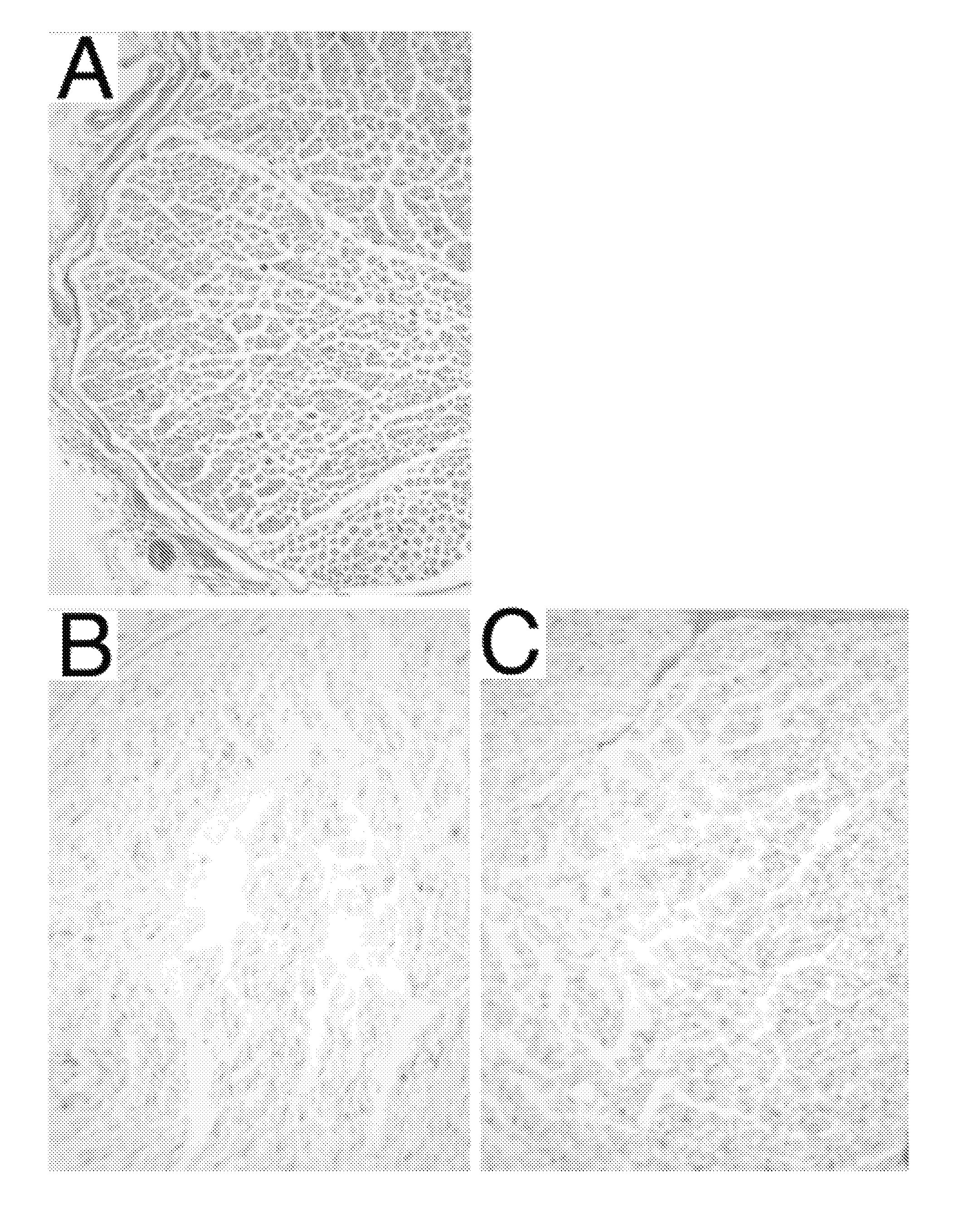Method for decellularization of tissue grafts
a tissue graft and decellularization technology, applied in the field of tissue graft decellularization, can solve the problems of curtail nerve regeneration, routinely involved rigorous decellularization techniques, loss of clean ends for direct repair or gap, etc., to reduce the cd4+ t-cell mediated immune response, promote graft implantation, and reduce the effect of recipient immune respons
- Summary
- Abstract
- Description
- Claims
- Application Information
AI Technical Summary
Benefits of technology
Problems solved by technology
Method used
Image
Examples
example 1
Decellularization Process
[0083]All procedures should employ aseptic techniques and sterile solutions. Following are the steps of one embodiment of the decellularization process of the subject inventon.
1. Resect nerve from a donor and store frozen.
2. Thaw the nerve at room temperature. Rinse with chilled water. Submerge in a large volume of chilled water. Gently agitate at 4° C. for 6 hrs (or longer).
[0084]3. Submerge the nerves in a large volume of 125 mM (or more concentrated) Sulfobetaine-10 in Extraction Buffer (10 mM Na phosphate buffer, pH 7.2+150 mM NaCl) or any physiologic saline. Gently agitate at 25° C. (near room temperature) for 15 hrs (or longer).
4. Replace with a large volume of fresh 125 mM (or more concentrated) Sulfobetaine-10 in Extraction Buffer or any physiologic saline. Agitate for 6 hrs (or longer) at 25° C.
5. Wash with a large volume of Extraction Buffer or any physiologic saline. Agitate at 25° C. for 60 min (or longer).
6. Wash with a large volume of Rinse Buf...
example 2
Comparison of Decellularization Method with Rabbit Nerves
[0085]Grafts prepared in accordance with the subject invention as described above are referred to as DC3 grafts. DC3 grafts were compared to normal (unprocessed) rabbit nerve and rabbit grafts processed by the protocol described by Hudson et al., (Tissue Engineering 10:1346-1358, 2004) and U.S. Pat. No. 7,402,319; referred to herein as DC2 grafts.
[0086]The DC2 and DC3 grafts from the two processing methods were evaluated by several histological techniques. Results of each evaluation were semi-quantitatively scored (0=Not extracted, 1=Partially extracted, 2=Mostly extracted, 3=Fully extracted and R=Redistributed). Results for the two detergent processing schemes (DC2, DC3) and normal nerve control are shown in FIGS. 1-6.
[0087]FIG. 1 illustrates hematoxylin and eosin (H&E) stains of rabbit nerve tissue (control; panel A), rabbit nerve tissue processed in accordance with the process taught by Hudson et al. (DC2; panel B), and rab...
example 3
Immunocompatibility of Nerve Grafts
[0093]Extensive in vivo testing in New Zealand White (NZW) rabbits has been performed with nerve grafts processed by the Hudson et al. method and the subject invention. Results show that both types of decellularized nerve grafts were immunologically compatible and no graft rejection was observed.
[0094]NZW rabbits are an outbred strain. It is known in the literature that allografting of live or cellular tissues from a NZW rabbit donor to NZW recipient results in graft immunorejection.
[0095]Therefore, the observed lack of graft rejection in NZW allografts demonstrates that nerve allografts prepared by the subject invention are immunocompatible.
PUM
| Property | Measurement | Unit |
|---|---|---|
| pH | aaaaa | aaaaa |
| temperature | aaaaa | aaaaa |
| temperature | aaaaa | aaaaa |
Abstract
Description
Claims
Application Information
 Login to View More
Login to View More - R&D
- Intellectual Property
- Life Sciences
- Materials
- Tech Scout
- Unparalleled Data Quality
- Higher Quality Content
- 60% Fewer Hallucinations
Browse by: Latest US Patents, China's latest patents, Technical Efficacy Thesaurus, Application Domain, Technology Topic, Popular Technical Reports.
© 2025 PatSnap. All rights reserved.Legal|Privacy policy|Modern Slavery Act Transparency Statement|Sitemap|About US| Contact US: help@patsnap.com



